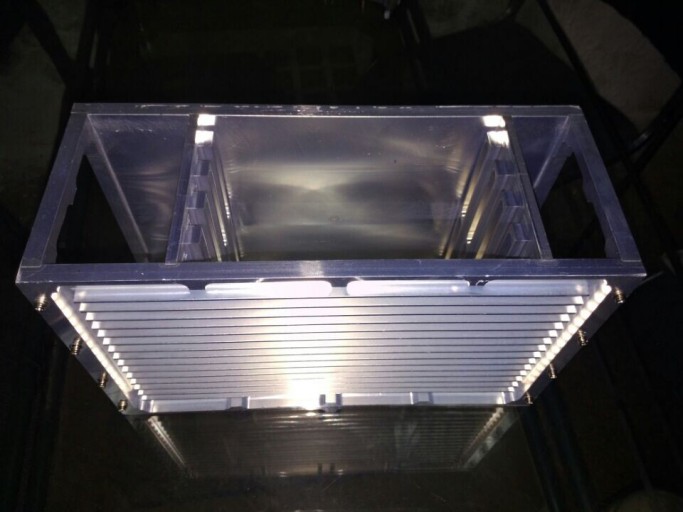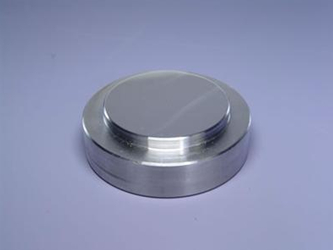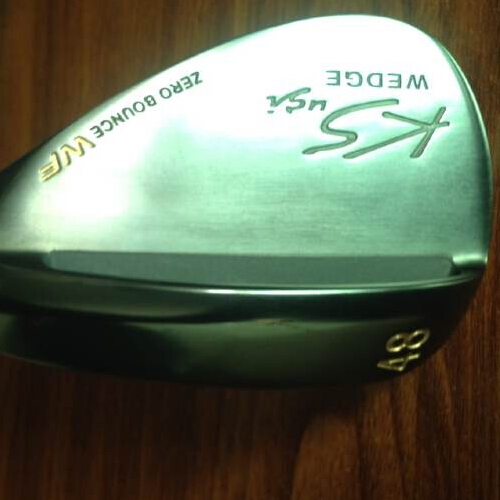Products



| SUS420 blade heat treatment | |
|
Product Description: the hardness of 50-55HRC chromium transfer standard, salt spray test for 40 hours does not rust Order Hotline:400-6388-689 |
|
Depending on the application of mold material, the use of performance and process performance primarily consider several aspects .
1 Performance Requirements
( A ) hardness and hot hardness (heat stability ) . Under the action of the mold should be able to maintain stress shape and size do not change rapidly , the hardness of the steel molds important performance indicators . Therefore , after the mold after heat treatment should have a sufficiently high hardness , such as cold mold general hardness 55-65HRC, and hot die hardness can be appropriately reduced, generally in the range of 35-55HRC .
Hot hardness refers to the mold stay organized and stable performance under high temperature operating conditions heated cargo , with resistance to softening . The hot hardness of steel is mainly determined by the chemical composition and heat treatment of steel, it is one of the important performance indicators of hot work die steel.
( 2 ) abrasion resistance. Die withstand considerable work stress and friction , requiring mold in use should be kept unchanged its size and shape , durable, so the mold material should have good abrasion resistance. Die wear resistance depends not only on composition, microstructure and properties of steel, and have a greater relationship with the operating temperature, load ( stress ) state , lubrication conditions.In general , increasing the hardness of steel is beneficial to improve the wear resistance of the steel.
( 3 ) the strength and toughness. Mold and then work under great loads , including shock, vibration, torsion and bending complexity profit. Mold often due to heavy load of insufficient strength , lack of toughness , causing mold edge or partial rupture prematurely damage ; quantity of steel and steel grain size of carbides , size and distribution of the amount of retained austenite and so on steel strength and toughness have a great impact . The toughness of a material of high hardness difference . Notch sensitivity of the surface , carrying capacity is poor, is one of the important reasons for early failure of the mold . Practice shows that , according to the conditions and performance requirements , a reasonable choice of the chemical composition of the steel mold , organization of the state and the heat treatment process , to get the best fit sufficiently high strength and toughness .Moreover, according to the working conditions of various molds , also are considered high-temperature strength, thermal fatigue , thermal resistance and abrasion resistance properties.
2 . Process performance requires the mold is used in the state high hardness, high strength, high wear resistance and toughness enough , so the high quality requirements of the mold steel metallurgy , should minimize the gas content in steel , non-metallic inclusions and harmful (sulfur , phosphorus, etc. ) content ; same time, to ensure that the steel has a good performance , even after proper thermal processing ( forging , rolling ) , to change the cross-sectional shape , and the nature of the cast microstructure change , and then by cutting mold made of a certain shape and then the final heat treatment ( normalizing , quenching and tempering machine ) , so as to obtain the required performance mold . Thus , process performance tool steel for mold making are equally important .
( A ) processing . Processing means forging , rolling , and other processing performance and cutting, grinding and other forms of cold performance , they and chemical composition of the steel , metallurgical quality, organizational status, and sulfur and phosphorus content and so on. Most die steel is an alloy containing a variety of elements, especially carbon, high-alloy steel , during thermal processing is necessary to strictly control the heating temperature and cooling method to improve the organization of the state , in order to reduce tool wear during the cold and raise surface quality of the mold .
( 2 ) deformation and hardening heat treatment temperature . The mold is made , the final heat treatment requirements for changing the size and shape of the die as small as possible , and therefore , the degree of deformation during the heat treatment mold produced very strict ; same time, requiring a quenching temperature range wide enough to minimize overheating phenomenon .
( 3 ) hardening and hardenability. Tool steel these two performance requirements , depending on the conditions of use have focused on the mold . For example , the requirements for the surface with high hardness and drawing die punching die steel , hardened seem more important ; For the requirements of the entire section has a uniform performance of hot work die and plastic mold steel , the hardenability is more important .
( 4 ) decarbonization sensitivity. Mold surface decarburization, the mold will reduce the performance of the surface layer . Therefore, the requirements of die steel decarburization sensitivity as low as possible . In the same heating conditions favorite, decarbonization sensitivity of steel is mainly determined by the chemical composition of the steel , particularly carbon content.
( 5 ) Surface polishing performance . Plastic mold cavity surface quality requirements, the use of mechanical, electrical and chemical polishing surface processing methods to improve performance .

Su's heat treatment Co. Ltd. was founded in 1990, after decades of development, scale is continually expanding, is located in Shajing Town Baoan District Shenzhen City Bridge second industrial zone, covering an area of 3000 square meters, the main business is to take all the metal, alloy steel, beryllium copper, heat treatment of high speed steel, cryogenic treatment (-196 C), nitrogen gas, liquid nitrogen, QPQ salt bath production line, high-frequency quenching, blackening and carburizing, the surface of hard and stainless steel processing.
The company is equipped with power of heat treatment technology, established a perfect quality testing equipment, equipped with vacuum quenching furnace, vacuum furnace, pit furnace, furnace, liquid nitrogen atmosphere furnace, rotary furnace, large mesh belt furnace, improve metallographic inspection equipment, material failure analysis, scientific management and complete, rigorous technology, skilled operation.
Company will be excellent quality and perfect service, and actively challenge, satisfy customer demand, has passed ISO9001:2000 in 2003 September (SGS) international quality certification. Has now become a reputable manufacturers.
Su's heat treatment (Shenzhen) Co., Ltd. Guangdong ICP No. 14020634
service hotline: 0755-27291255
Fax: support for 0755-27293730
E-MAIL:sushirechuli@163.com
Company address: Shenzhen, Baisha bridge Second Industrial Zone No. 14









